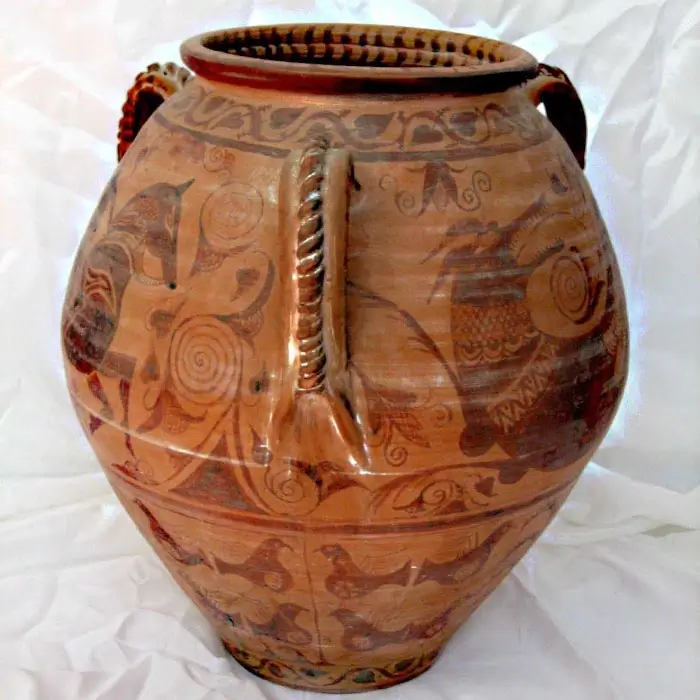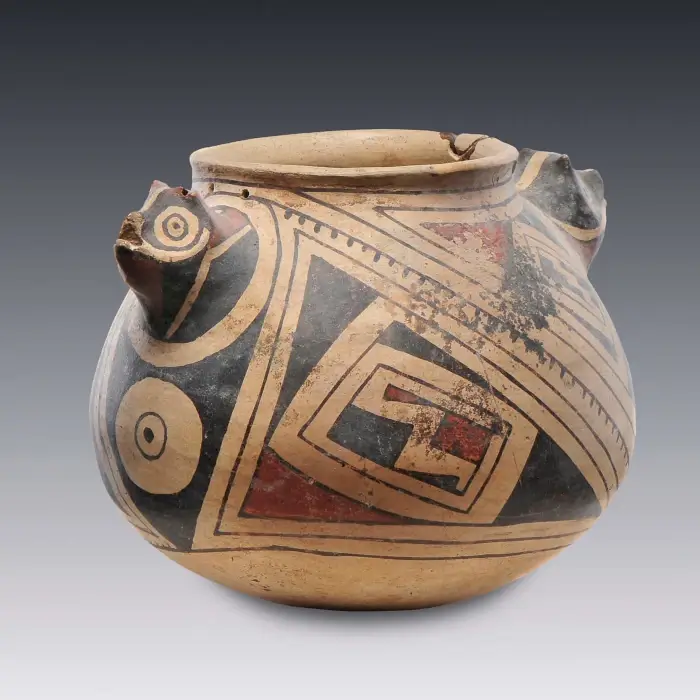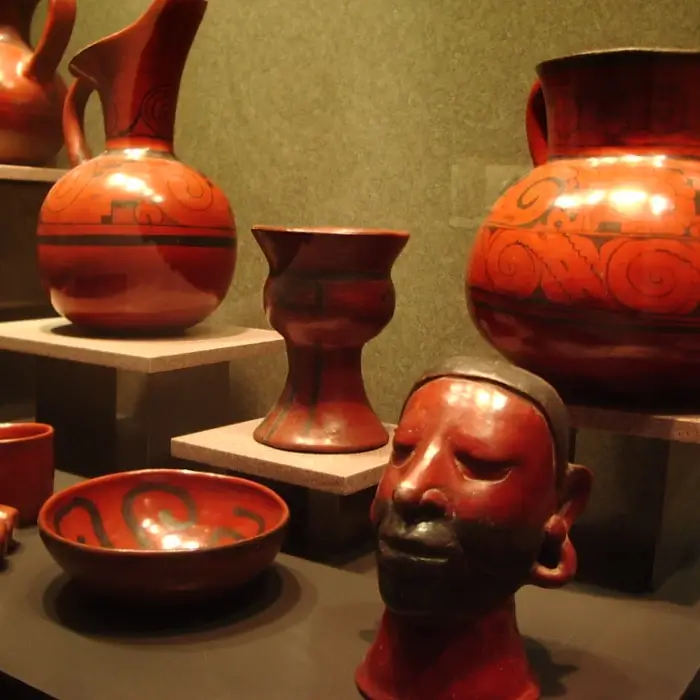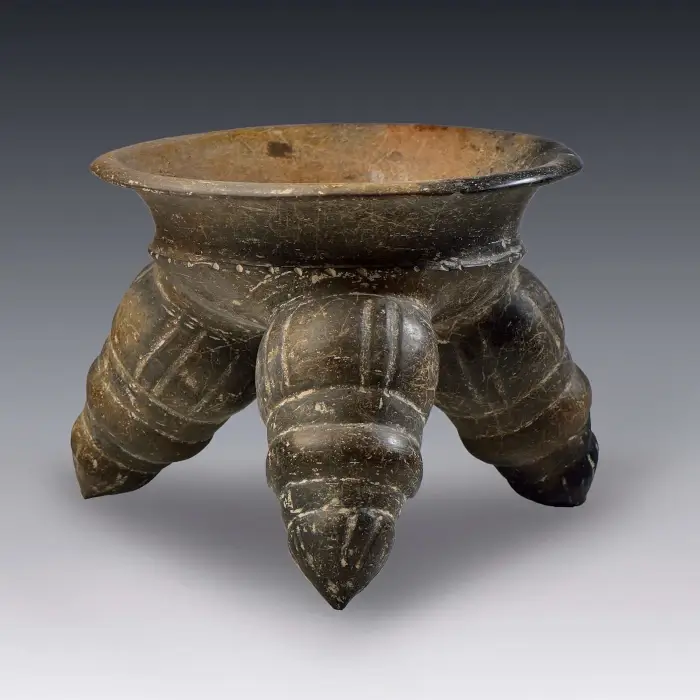Zenú ceramics: an example of harmony with nature
Zenú or Sinú pottery emerges as an eloquent testimony of the skill and artistic sensitivity of the pre-Columbian culture that flourished in the fluvial regions of what we know today as Colombia, in the valleys of the San Jorge and Sinú rivers (hence the name), as well as near the Caribbean coast.
Interweaving skills in goldsmithing and pottery, the Zenú not only captured their worldview in the shapes and designs of their ceramic creations, but also reflected the complexity of their social organization and spiritual practices.
Their legacy, steeped in symbolism and meticulousness, invites us to immerse ourselves in a journey through the past to discover the nuances of a tradition that, through clay and fire, managed to capture the very essence of life and the transcendence of this enigmatic civilization.

Distinctive characteristics of Sinú ceramics
Sinú pottery, a reflection of the rich cultural tradition of the Sinú River region of Colombia, is distinguished by its intricate symbolism and religious value. These pieces were not only utilitarian and domestic objects, but also played a ceremonial and decorative role in Zenú society.
The manufacture of these pieces followed meticulous techniques, using materials such as clay, water and sometimes alabaster powder, and tools such as the potter’s wheel and molds to shape their unique creations.
Among the characteristic forms of Sinú ceramics are hollow works, such as deep jars, and open works, such as plates and bowls. They are also noted for their closed works, such as money boxes and canteens, and flat molded pieces for construction, such as bricks and tiles.
The decorative motifs and iconography of Sinú ceramics revealed the community’s connection to its environment and spiritual beliefs. Through the ceramic pieces, the Sinú people depicted representations of the local fauna and flora, as well as scenes that reflected their cultural practices and rituals.
Origins and expansion of the Zenú culture
The Zenú culture, also known as Sinú, settled in what is now northwestern Colombia, flourishing from approximately 200 BC to 1600 AD.
This civilization stood out for its complex social and economic structure, evidenced by its advanced canal systems for agriculture and its artistic expressions in gold and ceramics.
Before the arrival of the Spanish, the Zenú had formed a network of politically and religiously interconnected communities, each with its own identity, but united under a common Zenú tradition.
With the Spanish conquest, the Zenú culture faced a demographic and cultural decline, although some practices and traditions, such as textiles, have survived to the present day among their descendants. These, now residing in areas of the departments of Córdoba, Sucre and Bolívar, keep alive the essence of their legacy, particularly in the art of weaving.
Pottery and goldsmithing, especially those made in the San Jacinto mountains, reflected Zenú skill and aesthetics, with pieces ranging from everyday objects to ceremonial items, marking the importance of “Sinu pottery” in their cultural context.
This historical and cultural variety lays the foundation for exploring in detail the uniqueness of Zenú ceramics, their techniques, materials and the intrinsic symbolism of their pieces, which were not only artistic expressions, but also vehicles of spiritual and social meaning within their society. This legacy has been a fundamental piece in the puzzle of the rich and complex variety of all ceramics from the pre-Columbian and later periods in the Americas.
The most representative pieces of Zenú ceramics
Zenú pottery is distinguished by its notable use of anthropomorphic and zoomorphic figures, demonstrating a level of detail and skill that resembles true sculptural works.
These pieces, used in daily life as well as in ceremonies and rituals, stand out for their variety of materials, techniques, styles and shapes.
The decoration on these works varies, including techniques such as incision and stippling, as well as the painting of geometric figures, usually in shades of red on a cream background, which highlight the aesthetics and functionality of each object.
In addition, Zenú goldsmithing reflects their skill and creativity through false filigree and the delicate braiding of gold thread, manifesting a deep connection with their environment and natural life.
This relationship is evident in the representation of scenes of nature and daily life, where birds, felines, crocodiles and human figures in common activities adorn their creations, revealing the rich worldview and deep respect for nature of the Zenú culture.
These characteristics not only make Zenú ceramics a testament to advanced hydraulic engineering and harmonious interaction with their environment, but also underscore their cultural and spiritual importance within Zenú society. Through their shapes and decorative motifs, these pieces continue to communicate the identity and values of this ancient civilization.
The Zenú religion and symbolism, reflected in their gold and ceramic objects, demonstrates the political and religious relationship between the various ancient communities of the river valleys, uniting these peoples under a common Zenú identity.
The themes expressed in these materials suggest a strong connection with their natural environment and spiritual beliefs, showing similar designs in textiles, baskets and female clay figures, as well as in the construction of burial mounds, which were characteristics shared by all the peoples of these river valleys.

Buy pre-Columbian ceramics
Find original pieces and also reproductions identical to the traditional ceramic works that were made in pre-Columbian America and that are only found in museums, making them affordable.
Techniques and materials used in Zenú pottery
Zenú pottery stands out for its ingenious use of traditional techniques and local materials, reflecting harmony with its environment and a deep respect for nature. One of the predominant techniques is hand modeling, where the pieces are formed and smoothed by the use of hands and simple tools, without relying on potter’s wheels. This ancestral technique allows the creation of organic and unique forms that are characteristic of Zenú ceramics.
The materials used come directly from the earth, using different types of local clay which, once extracted, are prepared through a process of purification and kneading to obtain the desired consistency.
The decoration of the pieces is carried out using techniques such as incised and added decoration, adding decorative elements in relief before firing. Natural pigments, extracted from minerals and vegetables, are used to color the pieces, and firing is carried out in pits or open kilns, using firewood, which gives the finished pieces unique tones and textures.
Exploring these practices not only brings us closer to understanding the cultural significance of Zenú ceramics, but also prepares us to appreciate the depth of their symbolism and influences in the following sections of the article.
Symbolism and cultural importance of Sinu ceramics in the society.
In Zenú society, ceramics not only served a utilitarian purpose but also played a fundamental role as a carrier of symbolism and expression of cultural identity. Each ceramic piece reflected the beliefs, spiritual practices and values of this civilization, becoming a tangible testimony of its rich tradition and worldview.
Zenú pottery also played a crucial role in rituals and ceremonies, serving as offerings to the gods or as part of funerary offerings, underscoring its importance in religious practice and in the Zenú conception of the cycle of life and death. This deep intertwining between ceramics and the spiritual and social life of the Zenú highlights the value that this culture placed on pottery, not only as an artistic manifestation but also as a pillar of their identity and cultural legacy.

Where was each pre-Columbian culture?
Check our interactive map to see its period and location.




